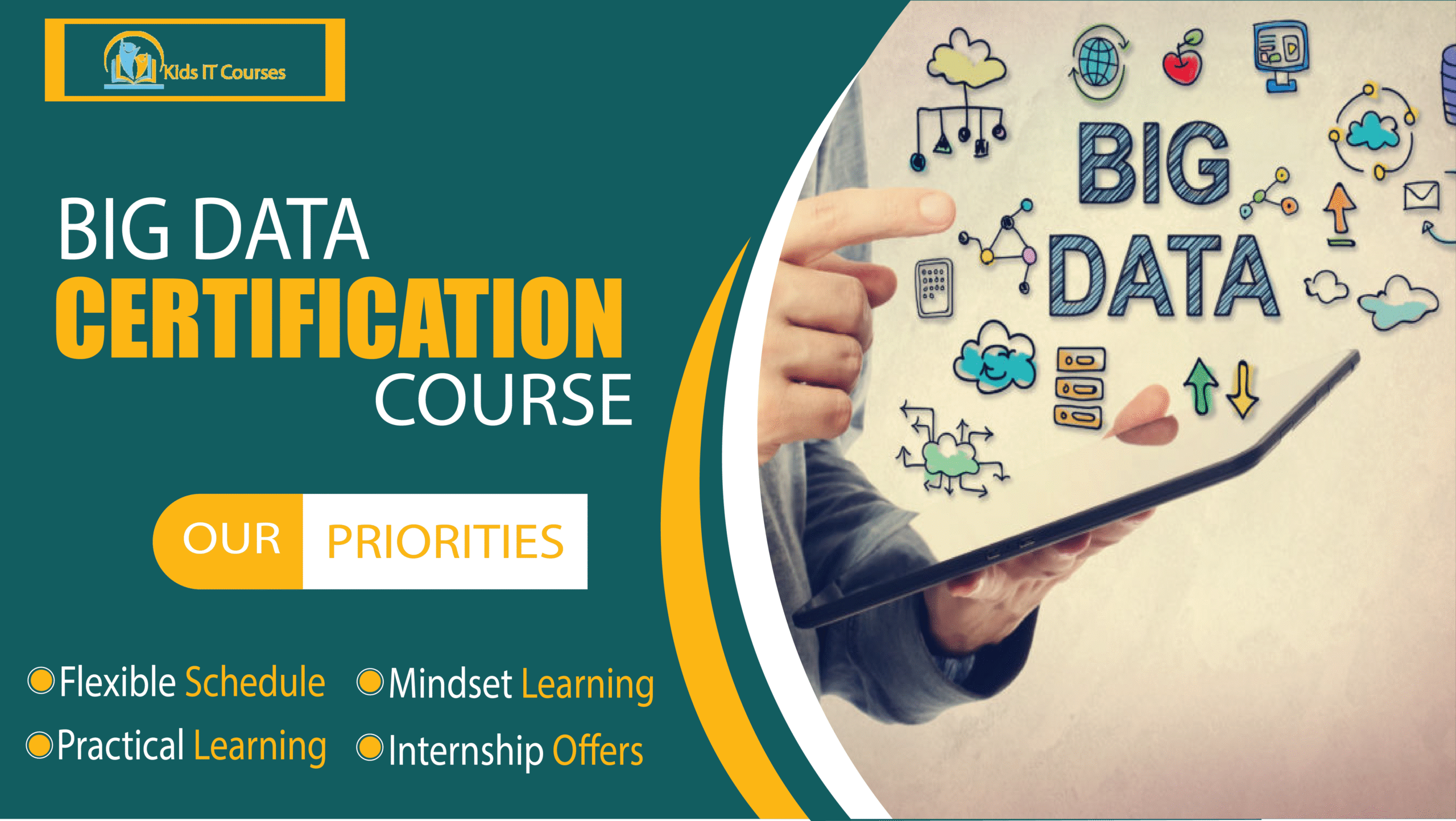
Big Data Course for Kids
Definition
• Big data means a huge amount of information from different places. Kids learn how to understand and use this data.
•Big data helps companies, games, and apps make smart choices. Kids see how data is used in real life.
• They explore fun data like weather, games, or YouTube stats. This makes learning interesting and easy.
• Kids use beginner-friendly tools to look at and organize data. It’s like sorting big puzzles on the computer.
• They learn to ask questions, find patterns, and make smart guesses. It sharpens their brain like a detective game.
• Kids turn boring numbers into cool charts and stories. It helps them explain ideas in a smart way.
• Big data is used in business, science, and tech jobs. Learning it early gives kids a powerful head start!
Importance
• Kids learn how to handle big sets of data like numbers, names, or facts. It teaches them how to make sense of lots of information.
• They practice finding patterns and solving problems using data. This sharpens their brain and decision-making skills.
• Big data is used in apps, games, and websites. Kids see how it’s part of daily life and technology.
• They learn fun and simple tools to work with data. This builds their confidence with technology.
• Working with data helps kids stay organized and think clearly. They learn to plan their work step by step.
• Big data is part of many top careers. Learning it now gives kids a great head start in tech and science.
Advantages for Big Data
• Kids learn how to look at lots of data and find meaning. It’s like finding stories hidden in numbers.
• They practice sorting and comparing data. This helps their brain grow stronger and think clearly.
• Kids use data to answer fun and useful questions. They learn how smart choices come from smart facts.
• They explore simple data tools used by real scientists and companies. It gives them a taste of the tech world.
• Working with data teaches step-by-step thinking. It helps them plan better in school and life.
• Big data is used in health, space, sports, and more. Learning it early gives kids a powerful head start.
Session 1 : What is Big Data?
What is data? What makes data “big”?
Examples: YouTube views, online games, weather apps
Structured vs unstructured data (explained with cartoons)
Fun analogy: Big data is like a huge Lego world of information!
Session 2 : Where Does Data Come From?
Data sources: social media, games, shopping, sensors
Real-world examples (e.g., Fitbit, Roblox, YouTube)
Activity: Where did you create data today?
Discussion: What is “good” and “bad” data?
Session 3 : How Do We Store Big Data?
Databases and cloud storage (Google Drive, iCloud)
What are rows, columns, and tables?
Simple intro to spreadsheets and CSV files
Create a mini table of favorite items
Session 4 : Exploring and Sorting Data
Find patterns, errors, duplicates
Use filters and sorts in Google Sheets or Excel
Activity: Organize a jumbled dataset (like favorite fruits or movies)
Why clean data is important
Session 5 : Visualizing Big Data
Bar charts, pie charts, line graphs
Use Google Sheets or Canva to visualize
Activity: Make a chart about your class’s favorite snacks
Why visuals make data easier to understand
Session 6 : Big Data and Privacy
What is personal data?
How apps track your behavior (in a safe way)
Why data should be protected
Privacy pledge activity: “I protect my data!”
Session 7 : Big Data in AI & Everyday Life
- How AI uses big data to make decisions
Real-life uses: Netflix suggestions, Google Maps, ads
Kid-friendly case study: How YouTube recommends videos
Group discussion: How big data helps and harms
Session 8 : Mini Big Data Project & Presentation
Choose a dataset (e.g., favorite pets, daily steps, fruit sales)
- Organize it into a table
Visualize it with graphs
Present findings to the class or family
Bonus Materials
Fun practice sets: favorite foods, screen time, video game scores
Easy-to-understand flashcards for terms like “database,” “filter,” “cloud”
Create bar charts, pie charts, and comparison visuals by hand or digitally
Printable poster with do’s & don’ts of online data sharing
Bright, editable certificate for course completion
